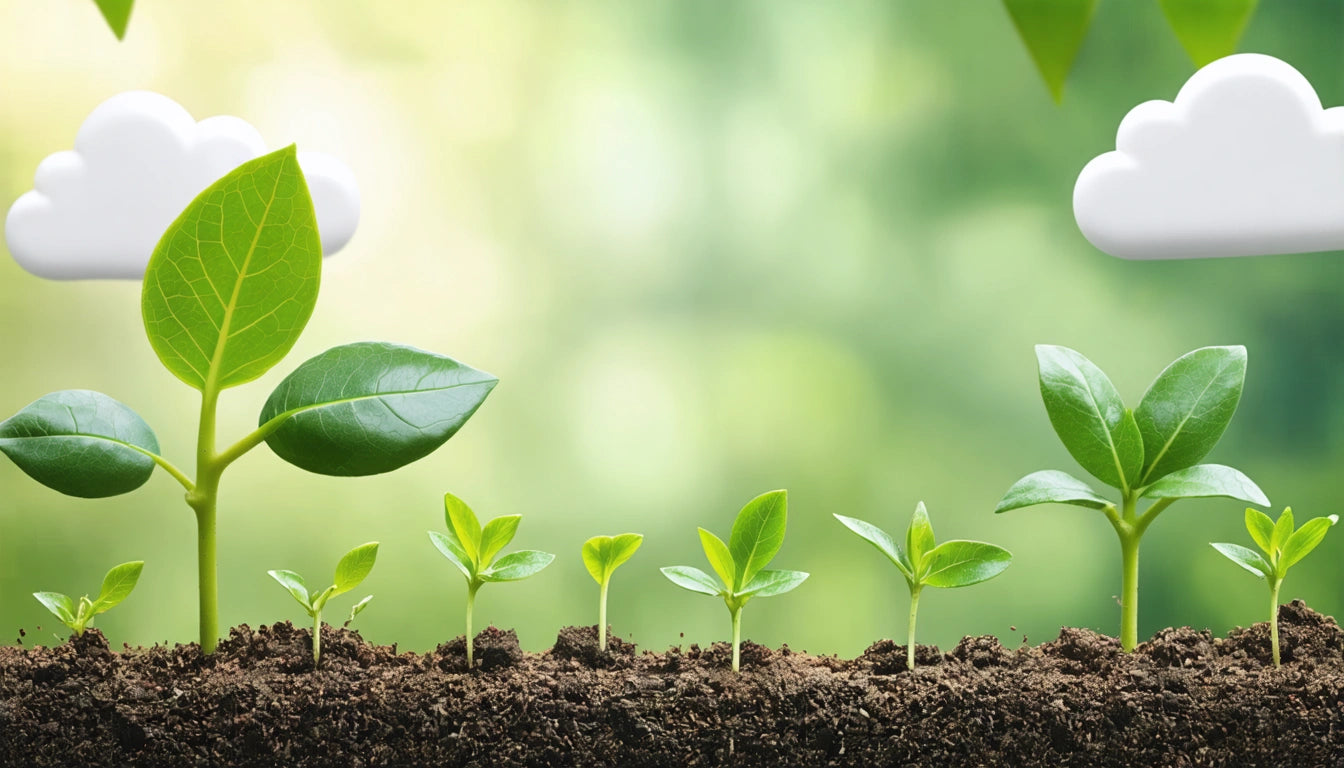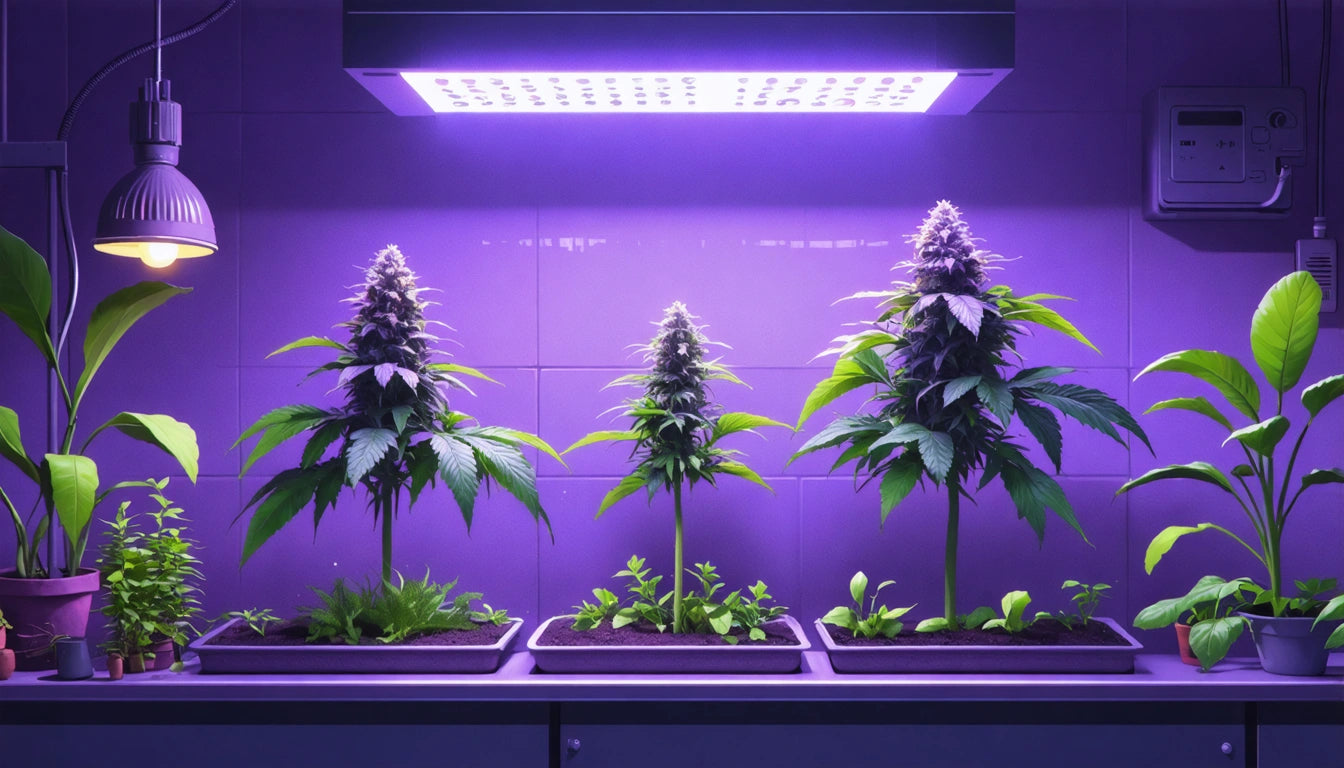Table of Contents
- Seed Basics: Understanding Germination Fundamentals
- Planting Seeds in Pots: Step-by-Step Instructions
- Growing Cannabis Seeds: Specialized Techniques
- Growing Specialty Seeds: From Coffee to Cosmos
- Seed Collection and Storage: Preserving for Future Growth
- Troubleshooting Common Seed Growing Problems
- Advanced Techniques for Seed Production and Stress Training
Comprehensive Guide to Growing and Planting Seeds
Starting plants from seeds offers gardeners control over plant varieties and growth conditions while providing an economical way to expand gardens. Whether you're interested in growing ornamental flowers, vegetables, cannabis, or exotic plants like coffee or date palms, understanding the fundamentals of seed germination and proper planting techniques is essential for success.
Seed Basics: Understanding Germination Fundamentals
Germination is the process where a seed transforms from dormancy to active growth. For successful germination, seeds require three critical elements: appropriate moisture, optimal temperature, and sufficient oxygen. Some seeds also need specific light conditions, though many prefer darkness during initial germination.
Before planting, it's important to know if your seeds require any pre-treatment. Some seeds have hard outer coatings that benefit from scarification (nicking or scratching the seed coat) or stratification (exposing seeds to cold temperatures to simulate winter).
Can You Put Seeds Straight Into Soil?
Many gardeners wonder if you can put seeds straight into soil. The answer depends on the seed type. While many common garden vegetables and flowers can be directly sown, some specialty seeds require pre-germination treatments. Direct sowing works best when:
- Soil temperature matches the seed's germination requirements
- The seed doesn't have a hard outer coating requiring scarification
- The growing season allows sufficient time for development
- The seed doesn't have special light requirements
Planting Seeds in Pots: Step-by-Step Instructions
Learning how to plant seeds in a pot is a fundamental gardening skill. Container growing offers advantages including mobility, controlled environments, and space efficiency. Follow these steps for successful container seed starting:
How to Plant a Seed in a Pot
- Select appropriate containers with drainage holes
- Fill with quality seed starting mix, leaving space at the top
- Moisten the soil thoroughly before planting
- Plant seeds at the depth recommended on the packet (generally 2-3 times the seed width)
- Cover with soil as needed and gently firm
- Water carefully using a fine spray or bottom watering
- Cover with plastic wrap or a humidity dome to retain moisture
- Place in appropriate light and temperature conditions
For beginners wondering how to plant seeds for beginners, starting with larger seeds like sunflowers, beans, or zinnias offers higher success rates. These seeds are easier to handle and generally germinate reliably.
Highlight: Proper storage containers are crucial for both planting and preserving seeds. Using quality jar caps and lids can help maintain optimal humidity levels when storing seeds for future planting seasons.
Growing Cannabis Seeds: Specialized Techniques
For those interested in how to grow pot seeds, cannabis cultivation requires specific approaches. Cannabis seeds benefit from specialized germination techniques:
How to Germinate Pot Seeds in Water
The water germination method involves placing seeds in distilled water until they crack open and show a taproot. This typically takes 24-72 hours and offers visual confirmation of viability before planting. As detailed in this comprehensive guide, water germination can increase success rates for cannabis seeds.
How to Plant Pot Seeds
After germination, cannabis seeds should be planted with the taproot pointing downward in a suitable growing medium. A step-by-step guide recommends planting at a depth of approximately 1/4 to 1/2 inch in light, aerated soil. Maintaining consistent moisture without overwatering is crucial during the seedling stage.
Growing Specialty Seeds: From Coffee to Cosmos
Specialty seeds often require specific techniques for successful germination and growth.
How to Grow Coffee from Seed
Growing a coffee plant from seed is a long but rewarding process. Fresh coffee seeds (not roasted beans) should be soaked for 24 hours, then planted in acidic soil (pH 6.0-6.5) at a shallow depth. Germination can take 2-6 months, requiring patience and consistent warm temperatures between 75-85 °F (24-29 °C).
How to Grow Mimosa Seeds
Mimosa seeds benefit from scarification before planting. Lightly sanding the seed coat or soaking in warm water for 24 hours helps break dormancy. Plant in well-draining soil and maintain warm temperatures. Germination typically occurs within 1-4 weeks.
How to Grow Cosmos Seeds
Cosmos are easy-to-grow annual flowers. Plant cosmos seeds directly in garden soil after the last frost, barely covering them with soil. They prefer full sun and will germinate within 7-21 days. For earlier blooms, start indoors 4-6 weeks before the last frost date.
Seed Collection and Storage: Preserving for Future Growth
How to Collect Seeds from Cosmos
Collecting seeds from cosmos flowers is straightforward:
- Allow flowers to fade and form seed heads
- Wait until seed heads turn brown and dry
- Cut the seed heads and place in a paper bag
- Allow to dry completely for 1-2 weeks
- Gently crush the seed heads to release seeds
- Store in a cool, dry place in labeled paper envelopes
This process applies to many flowering plants and provides free seeds for future seasons.
Troubleshooting Common Seed Growing Problems
Even experienced gardeners encounter germination issues. Common problems include:
- Overwatering leading to fungal diseases
- Inconsistent moisture causing stunted growth
- Improper planting depth affecting emergence
- Old or improperly stored seeds with reduced viability
- Temperatures outside optimal germination range
For seeds that fail to germinate, check moisture levels, temperature conditions, and seed quality. Sometimes simply adjusting environmental factors can dramatically improve success rates.
Advanced Techniques for Seed Production and Stress Training
For gardeners interested in producing their own seeds, understanding how to stress a plant to make seeds can be valuable. Plants naturally produce seeds when they perceive environmental threats to survival. Controlled stress techniques include:
- Reducing watering frequency (without causing permanent damage)
- Increasing light duration to simulate late-season conditions
- Slightly reducing nutrient levels
- For cannabis specifically, introducing controlled light interruptions
These techniques signal to the plant that it's time to reproduce, often resulting in seed production. However, timing is crucial, as excessive stress can damage or kill plants before they successfully produce viable seeds.
Whether you're growing common garden vegetables, ornamental flowers, or specialized plants like cannabis or coffee, the fundamentals of seed germination remain consistent. By understanding your specific plant's requirements and providing optimal conditions, you'll improve germination rates and set the foundation for healthy plant growth throughout the season.











Leave a comment
All comments are moderated before being published.
This site is protected by hCaptcha and the hCaptcha Privacy Policy and Terms of Service apply.